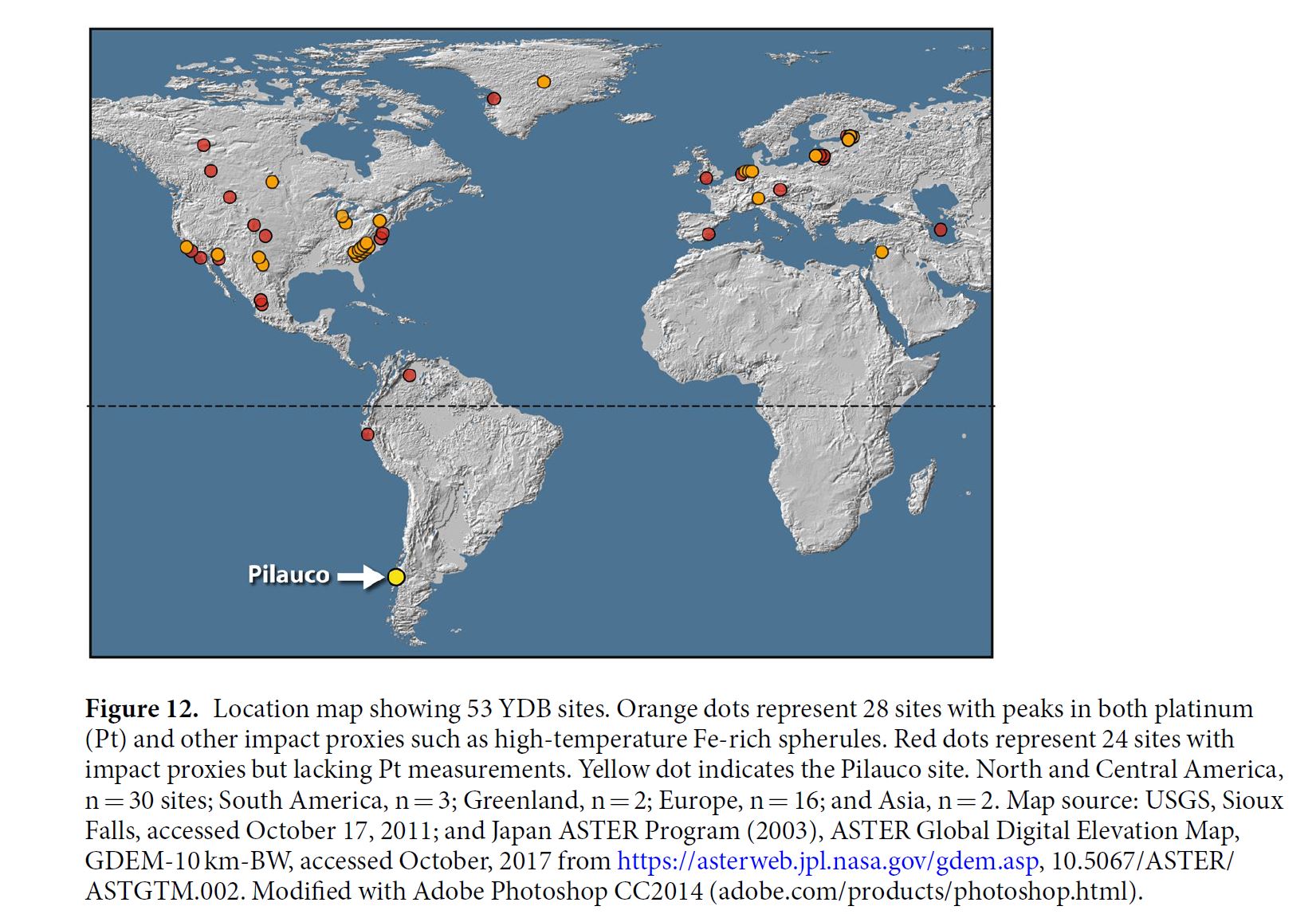The main objective of this study was to test the YDB impact hypothesis by analyzing a wide range of data from the Pilauco site in southern Chile. The following conclusions show that our data and interpretations are consistent with the YDB impact hypothesis and we found no evidence that refutes the hypothesis.
(1) At Pilauco, ~12,800-year-old peaks in high-temperature Pt-rich and native-Fe spherules are comparable to similar impact-related evidence found at more than 50 YDB sites in North America, Europe, and western Asia. It appears that the YDB layer at Pilauco is coeval with similar layers found at these sites on several continents and is also possibly related to the proposed YDB impact event.
(2) Identification of the YDB layer at Pilauco greatly expands the proposed YDB proxy feld ~6,000 km farther south of the closest well-studied YDB site in Venezuela, and ~12,000 km south of the northernmost YDB site in Canada, a distance equaling ~30% of Earth’s circumference.
(3) Cr-rich spherules are found in the YDB layer at Pilauco, but not found at the ~50 other sites on four continents, suggesting that one or more local impacts/airbursts occurred in the Cr-rich basaltic terrain
circa Pilauco.(4) Unusually high Pt/Pd and Au/Pt ratios suggest the infux of non-local PGE-rich material. Te presence of a significant Pt abundance peak in the YDB layer at Pilauco supports the proposition that the proposed YDB impact event was large enough to have distributed impact-related materials across both the Northern and
Southern Hemispheres.(5) The Pilauco charcoal record shows that the largest episode of biomass burning in the sedimentary sequence investigated was coeval with the widespread biomass-burning event at the YD onset, as identified in >150 ice, lake, and terrestrial records from four continents, including lakes in South America.
(6) Pollen, cuticles, and seeds records from Pilauco exhibit a large decline in abundance and diversity, and a major change in taxonomic composition of plants at the YD onset. These changes indicate there was significant environmental disruption at Pilauco, associated with abrupt climate change. Although the change in the abundance/diversity of plant taxa and fire activity recorded at the Pilauco site cannot be solely attributed to an extra-terrestrial impact, all the independent lines of evidence presented in our investigation (spherules, trace elements, fossil plants-animals, etc.) suggest that these changes may have been driven by an extra-terrestrial event.
(7) Te YDB layer at Pilauco coincides precisely with the abrupt termination of cooler climate of the Antarctic Cold Reversal across southern South America and Antarctica, immediately followed by the onset of warmer conditions. Trough the seesaw effect, this climatic change is anti-phased via atmospheric processes with Northern Hemisphere cooling at the YD onset.
(8) Human artifacts were found at Pilauco only below the YDB layer, suggesting a local population reorganization/decline. They were found only in association with extinct megafauna bones.
(9) At Pilauco, no bones or remains of extinct megafauna were found above the YDB proxy layer. Similarly, the record of Sporormiella spp. spores indicates that the local megafauna extinction was coeval with deposition of high concentrations of impact spherules and Pt, suggesting a possible causal connection to the YDB
impact event.In summary, evidence has been found in the Pilauco section that is similar to that found at >50 YDB sites on four continents. This is the first time that extensive YDB evidence has been found at high latitudes in the Southern Hemisphere. Te evidence reported in this study appears consistent with the proposed efects of a YDB cosmic impact event that affected both the Northern and Southern Hemispheres.
Conclusions, Sedimentary record from Patagonia, southern Chile supports cosmic-impact triggering of biomass burning, climate change, and megafaunal extinctions at 12.8 ka, Nature Reports, March 13, 2019


